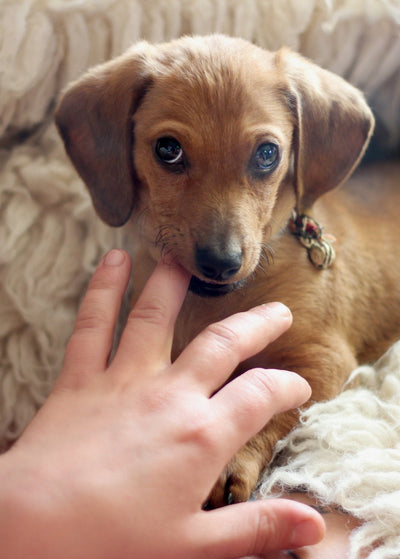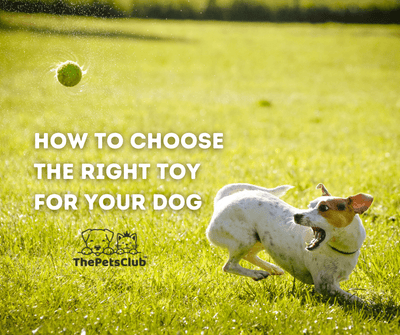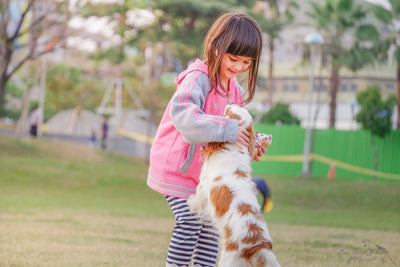 Spend AED 100 more for Free Shipping!
Spend AED 100 more for Free Shipping!
How to Handle Teething Stage in Pets Safely

Teething is a normal part of growing up, but for pet owners, it can mean chewed-up shoes, sleepless nights, and a lot of questions. If you have a playful puppy or an adventurous kitten, it's important to know how to deal with their teething stage so that they don't break your things or drive you crazy. Let's look at some ways you can help your furry friend feel better and get through this stage with confidence.

Symptoms of Teething in Pets
Teething affects both dogs and cats in the same way, but there are some signs that are specific to each species. If you notice these signs early, you can respond in the right way.
Common Teething Signs in Puppies and Kittens
-
Increased chewing on shoes, furniture, or even hands.
-
Red, swollen gums that may sometimes bleed a little.
-
Too much drooling or drool strings on their toys.
-
Reduced appetite or chewing food longer.
-
Whining or being irritable, especially when touched near the mouth.
-
Loose or missing teeth, especially in the 3 to 6-month age range.
These signs are all normal and usually show up in kittens around 3 weeks and puppies around 3 to 4 weeks. They last until the animals are about 6 months old.

Effective Solutions for Teething Relief
Managing how to deal with pets that are teething means giving them safe and effective options and comfort measures.
Chew Toys: The Gold Standard
-
Pick durable rubber or silicone toys for puppies.
-
Give textured plastic or freeze-safe toys to kittens.
-
To keep their interest high, switch out their toys often.
-
Stay away from toys with small parts or stuffing that kids could swallow.
Natural Remedies for Teething Discomfort
-
Frozen carrots or banana slices can help puppies feel better and give them food.
-
Wet, chilled washcloths twisted and frozen help gums feel better naturally.
-
Catnip-stuffed soft toys or frozen kitten-safe broth cubes are ideal for felines.
Maintain Dental Hygiene Early
-
Use pet-specific toothbrushes and enzymatic toothpaste to introduce dental care.
-
Gently rub your gums with a finger wrapped in cotton gauze.
-
Take it slow at first. Let them play with the toothbrush like a toy.

Do’s and Don’ts of Pet Teething Care
It is very important to be proactive when caring for your pet's teething. Let's go over some important rules for taking care of puppies and kittens who are teething.
Do’s for Teething Pets
-
Give your baby the right things to chew on, like frozen chews and toys that your vet says are safe.
-
Monitor chewing behavior to stop bad habits from building up.
-
Praise calm behavior when they use toys instead of furniture.
-
If your pet chews on something they shouldn't, don't yell at them.

Don’ts for Teething Pets
-
Don’t use human painkillers—they can be toxic.
-
Don’t scold harshly if your pet chews inappropriately.
-
Don’t give cooked bones, which can splinter.
-
Don’t ignore signs of extreme pain or blood.
You can protect your things and help your pet's emotional growth by following these do's and don'ts.

When to Visit the Vet During Teething
Sometimes, what looks like normal teething can hide more serious dental problems.
Warning Signs That Need a Vet’s Attention
-
Consistent bad breath or bleeding.
-
Broken baby teeth or swelling that can be seen in the mouth.
-
Loss of appetite for more than 24 hours.
-
Keeping baby teeth (especially in small dog breeds).
In rare cases, your vet may suggest getting your teeth cleaned by a professional or even having them pulled. Regular check-ups make sure that your pet's mouth is growing normally.
Conclusion: Making it easier for everyone to deal with teething
One important part of raising a healthy, happy pet is knowing how to deal with teething. You can help your dog grow by giving them the right chew toys, keeping an eye on their symptoms, and taking care of their teeth. This will also keep your things from becoming chew toys. At this point, your best friends are patience and planning. Don't be afraid to call your vet for help if you're not sure what to do. They can give you advice that is specific to your pet's needs.
FAQs About Pet Teething
When does teething start in puppies and kittens?
Puppies start teething around 3 weeks old, with adult teeth appearing between 4-6 months. Kittens follow a similar timeline.
Can I give ice cubes to a teething puppy or kitten?
Yes, but only under supervision. Ice cubes can be a choking hazard if too large or chewed aggressively.
Is it normal for my pet to chew excessively during teething?
Absolutely. Chewing is a natural way to relieve gum pain during teething.
What’s the best chew toy for teething pets?
Vet-approved rubber toys for puppies and textured plastic toys for kittens are ideal.
Should I brush my pet’s teeth during the teething stage?
Yes, but gently. Start slow and use pet-safe products only.
Can teething cause diarrhea in pets?
Not directly, but chewing on dirty objects can introduce bacteria. Monitor closely and consult a vet if symptoms persist.

 Facebook
Facebook




